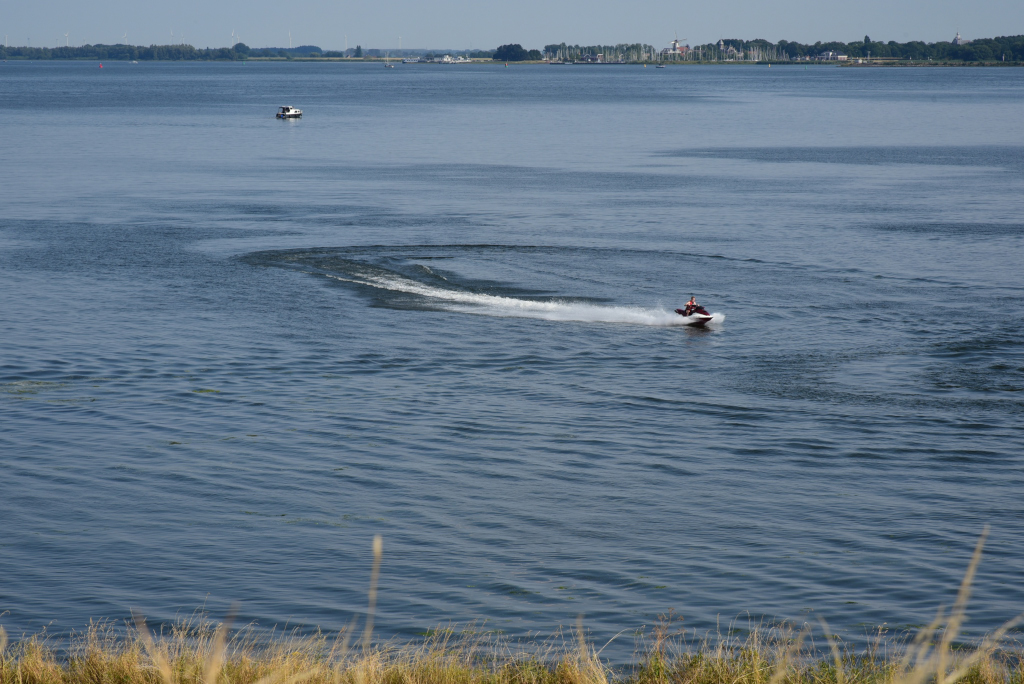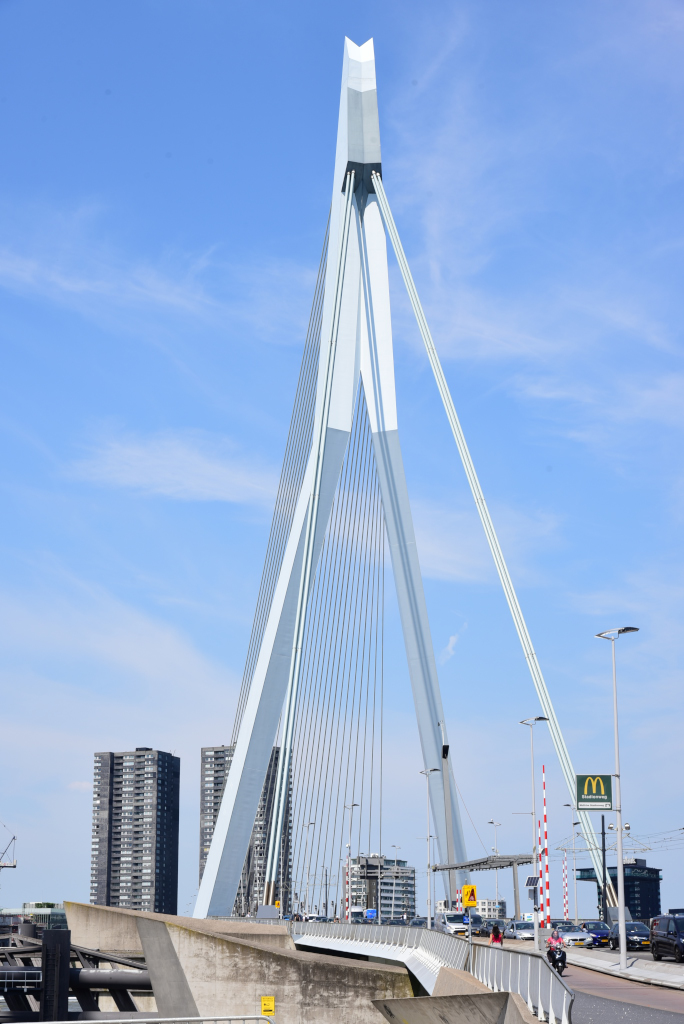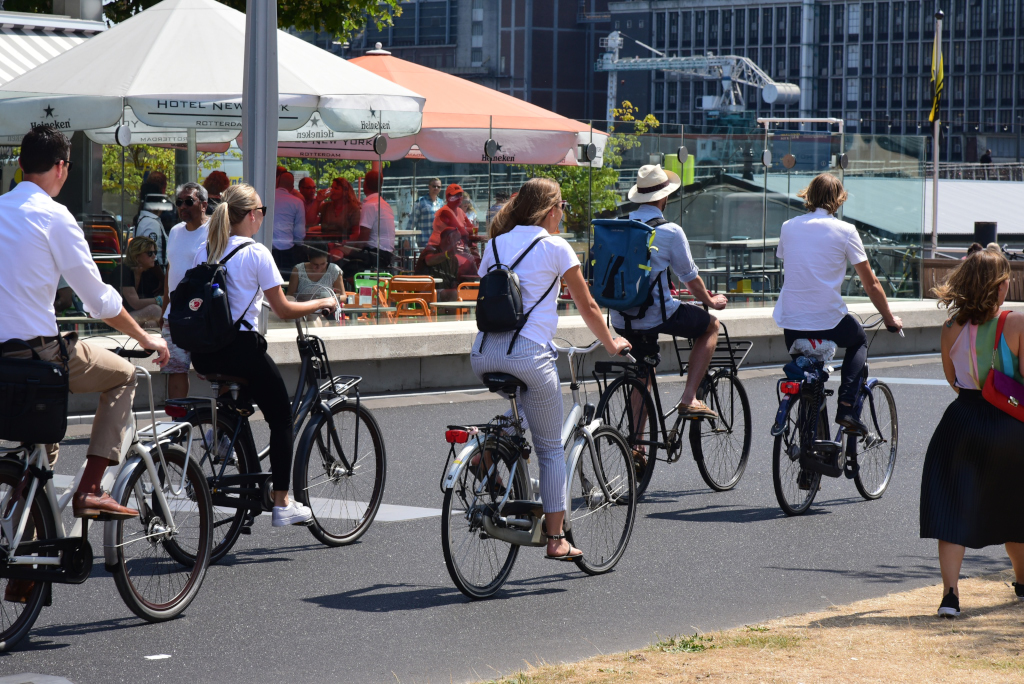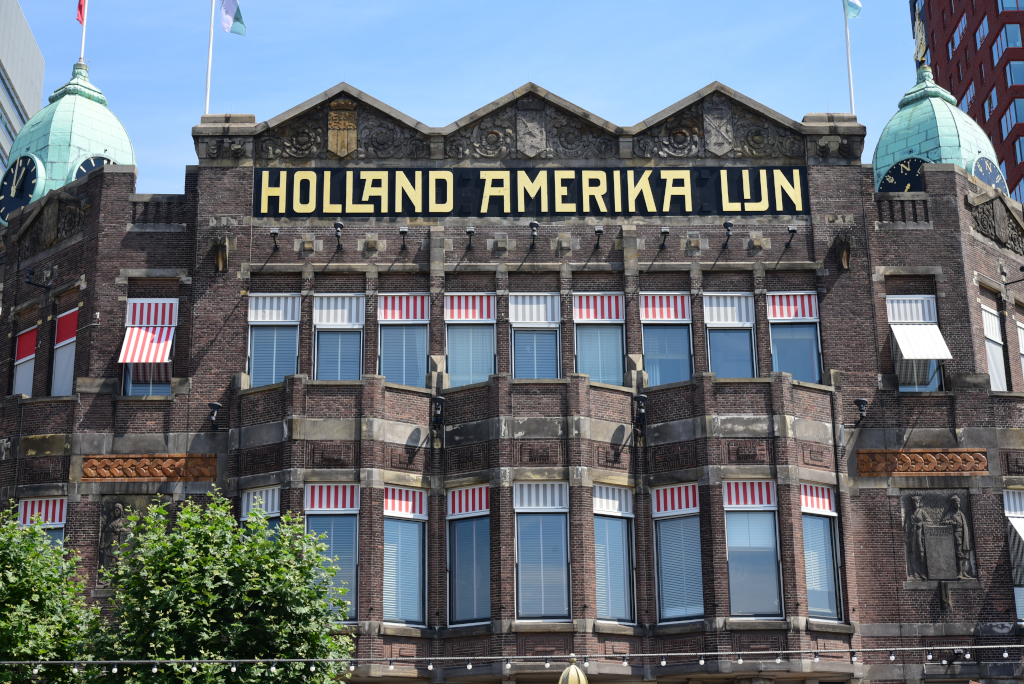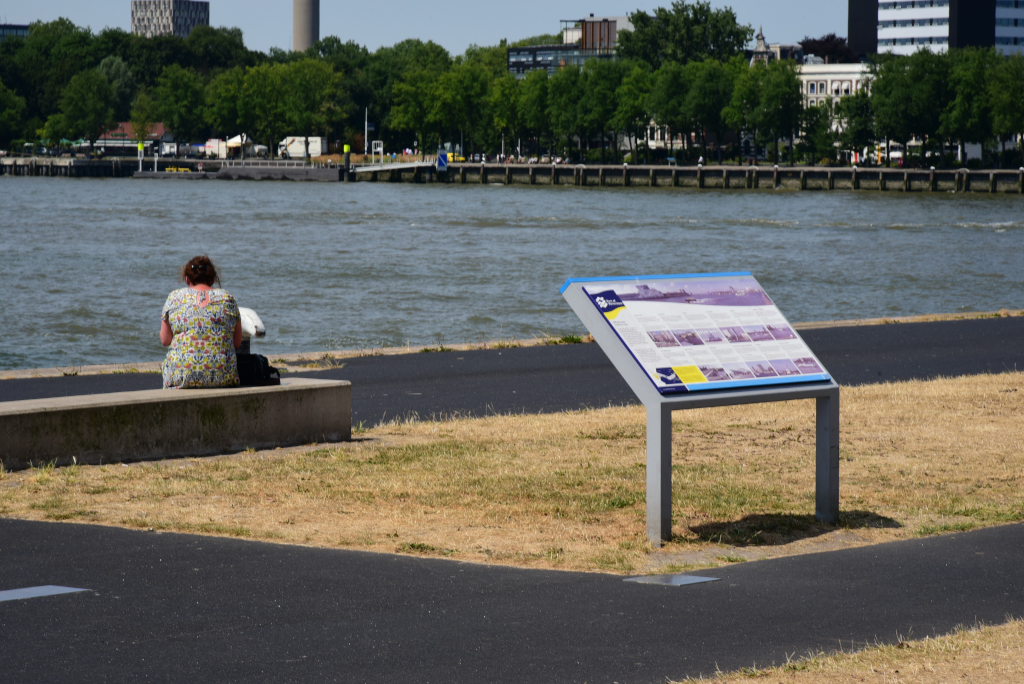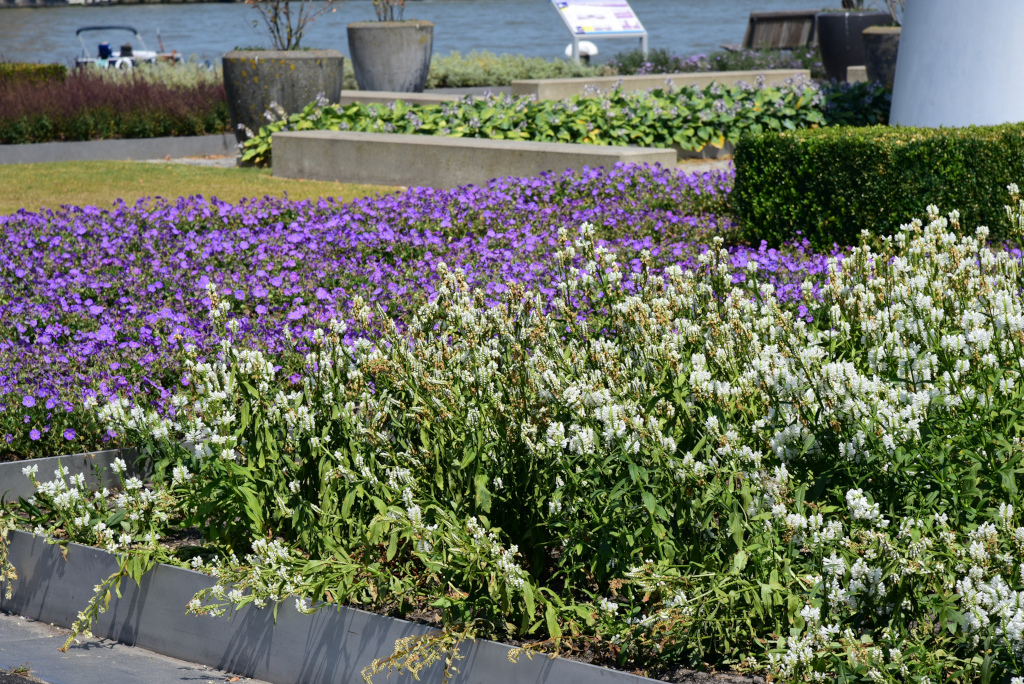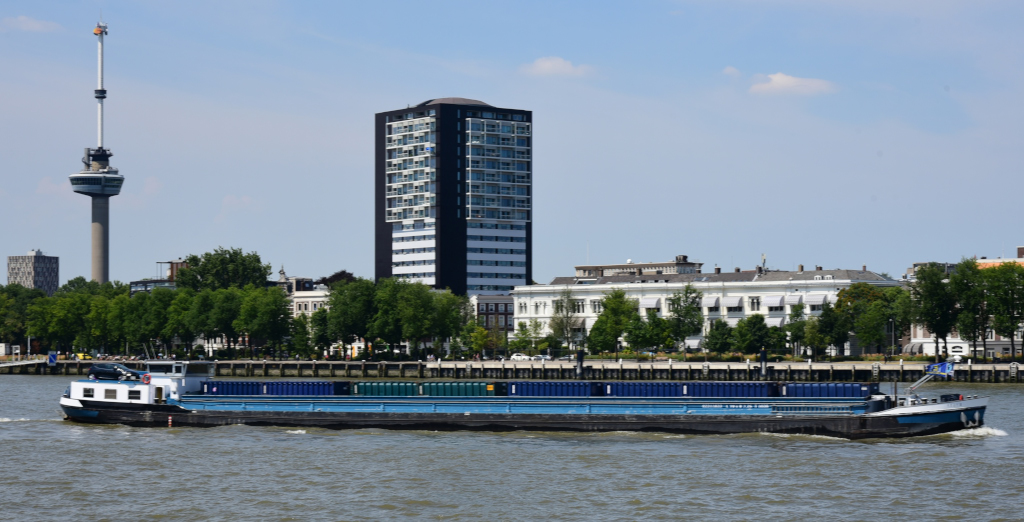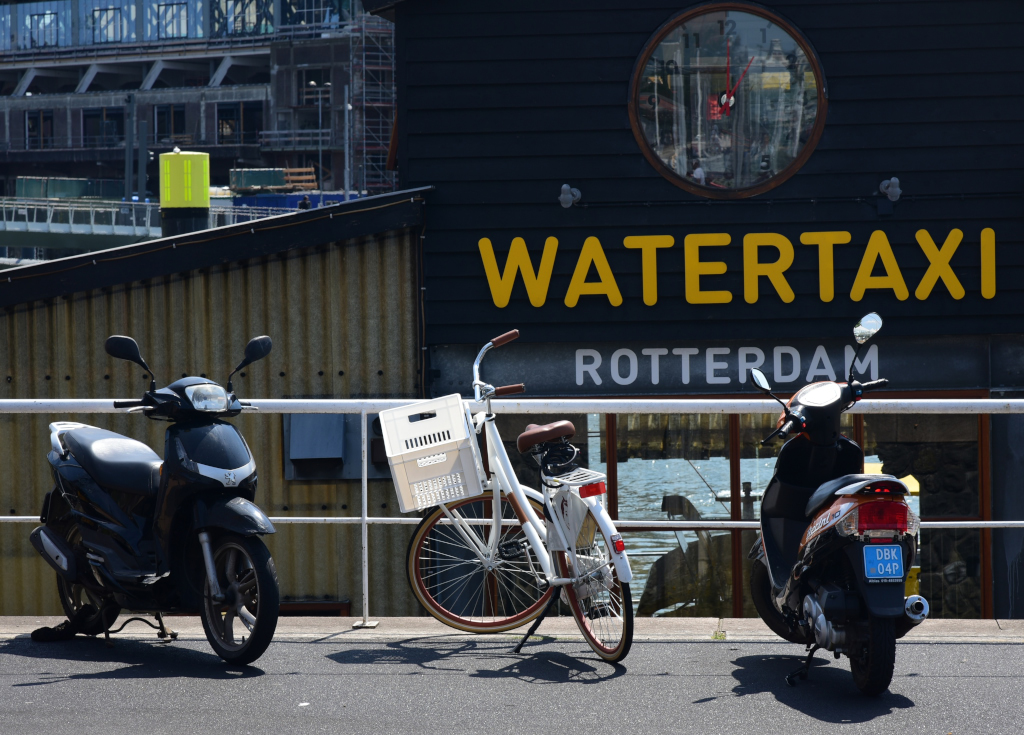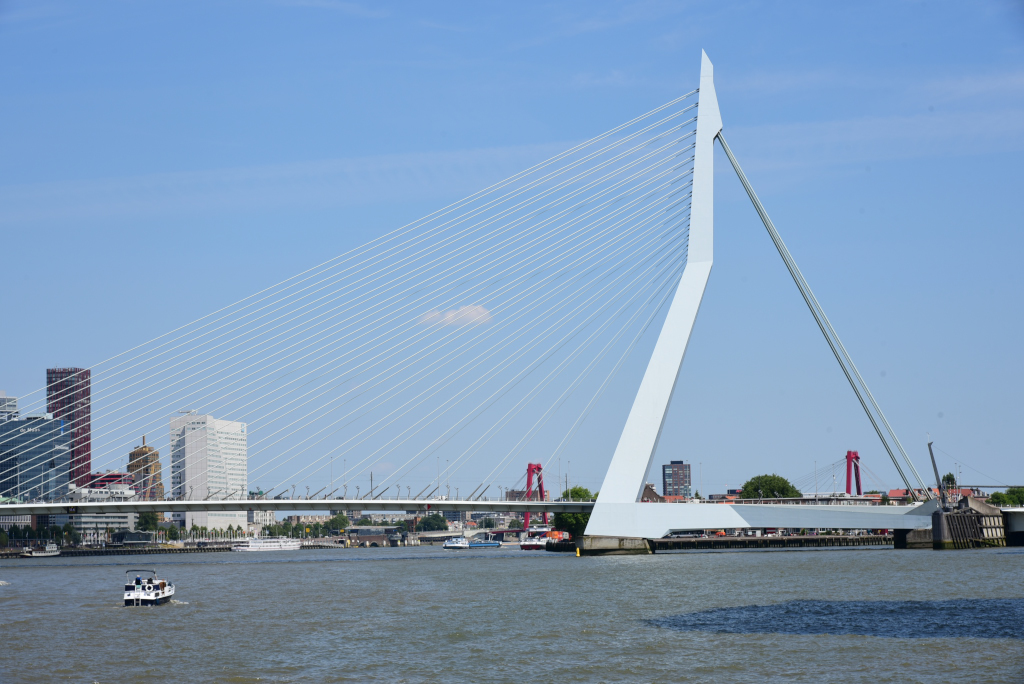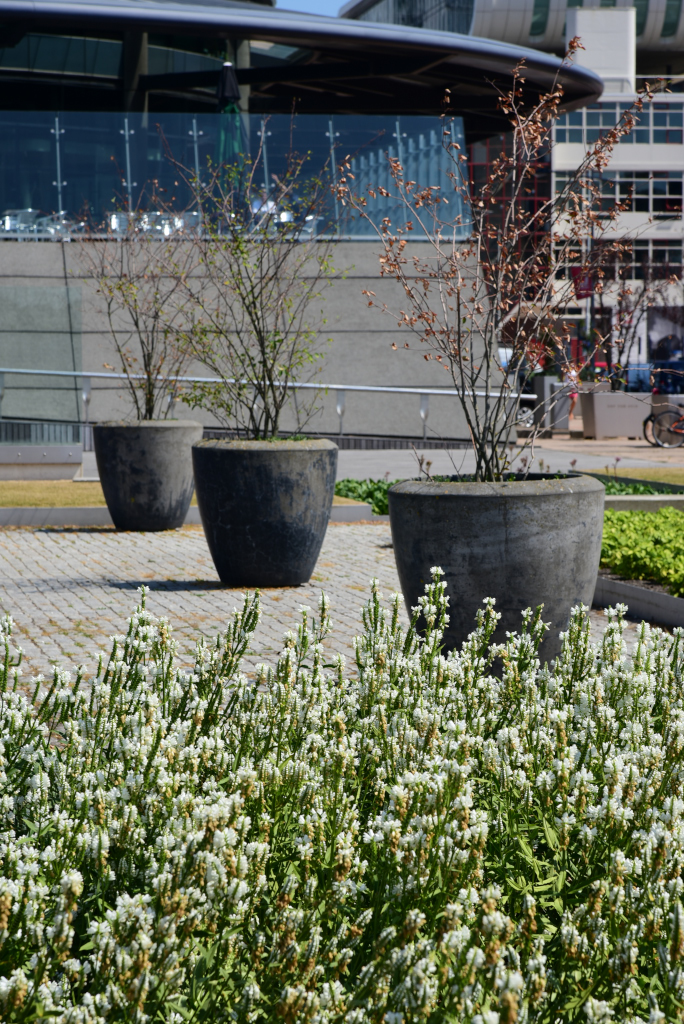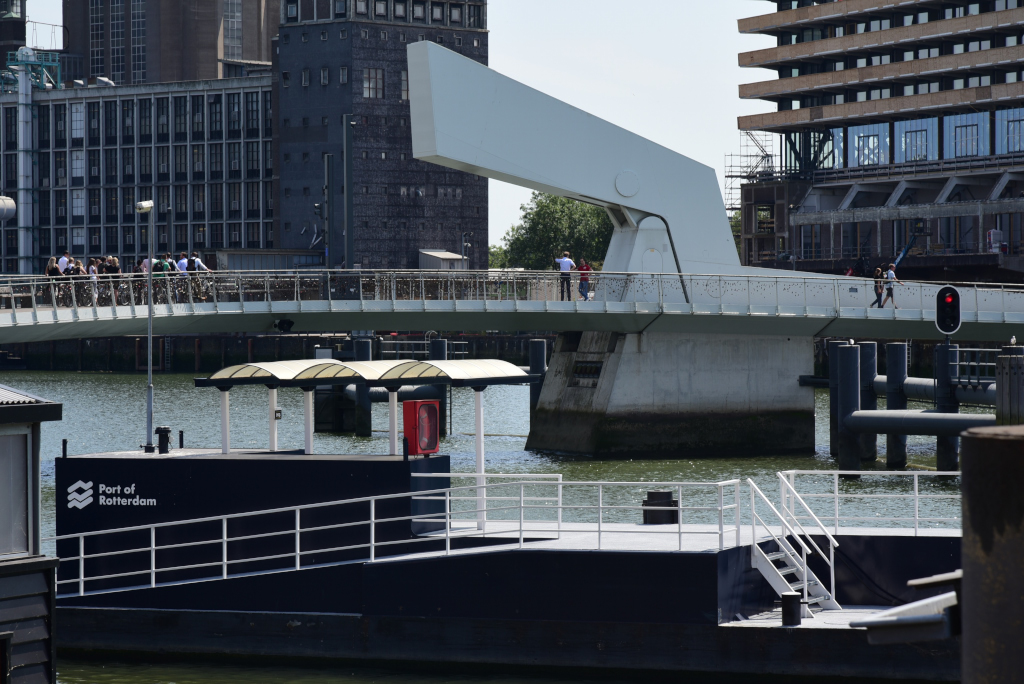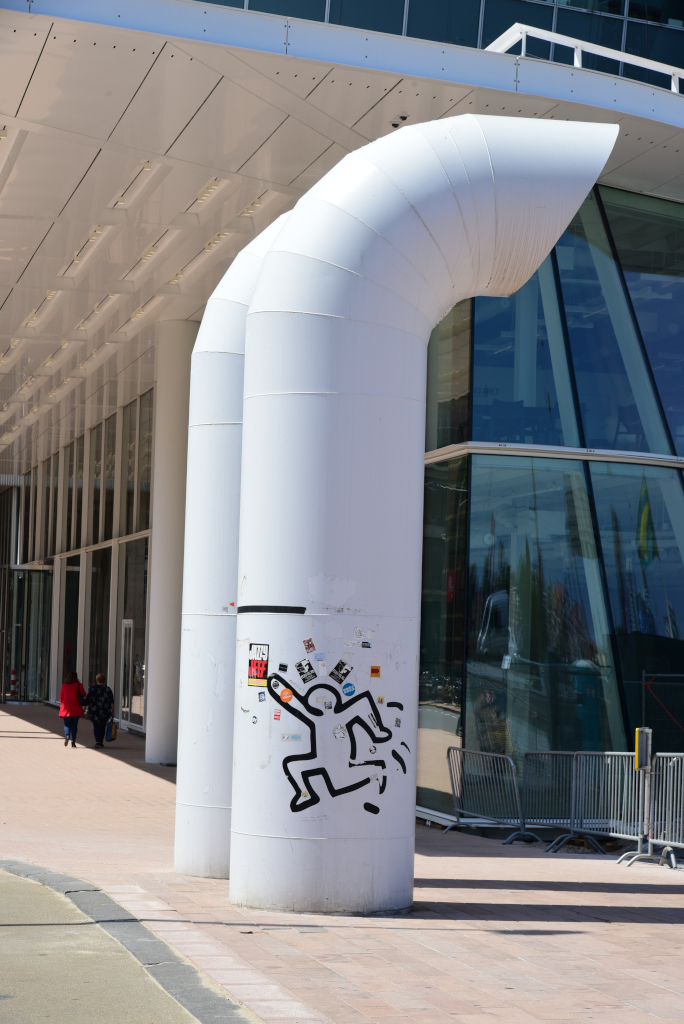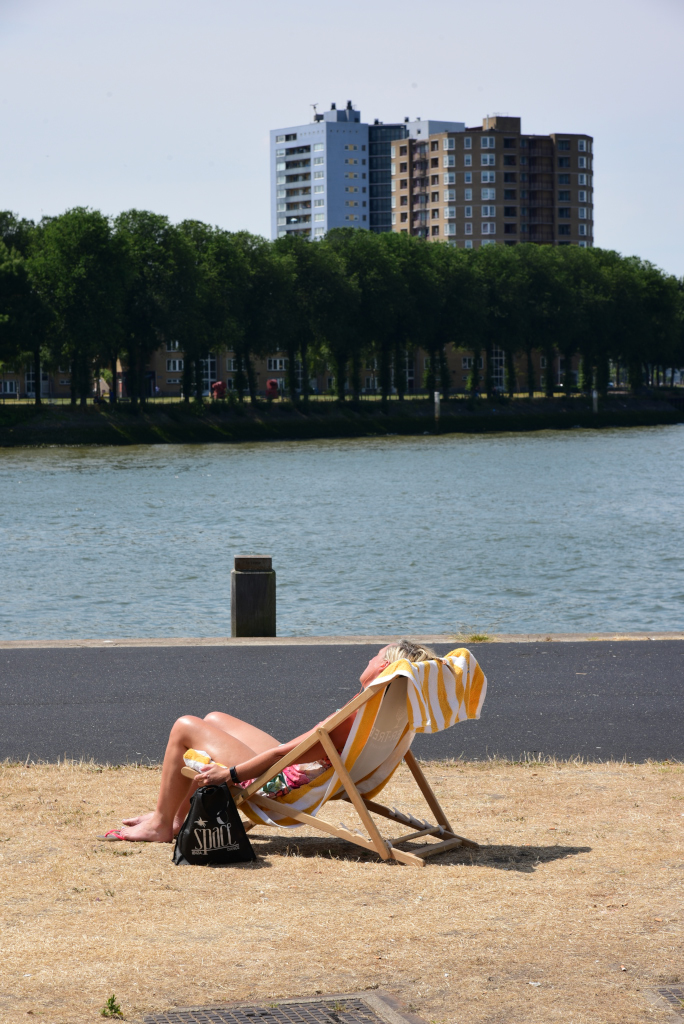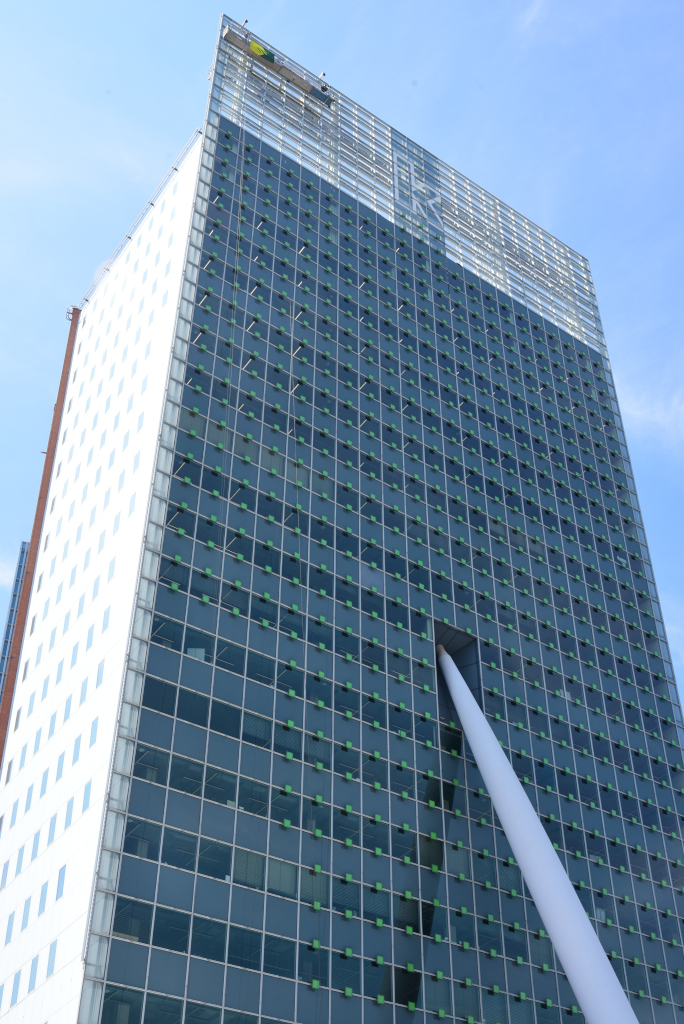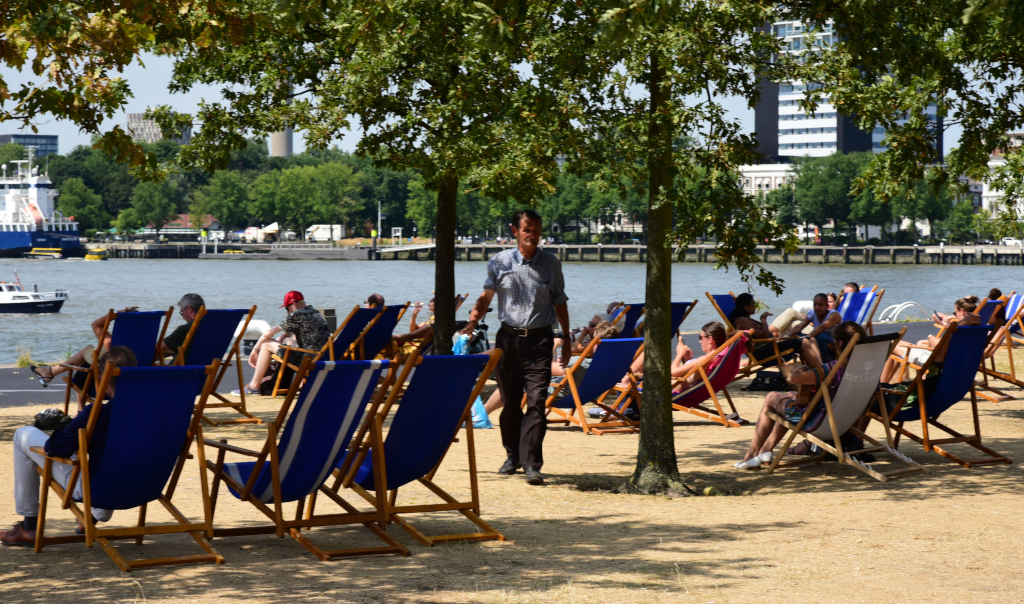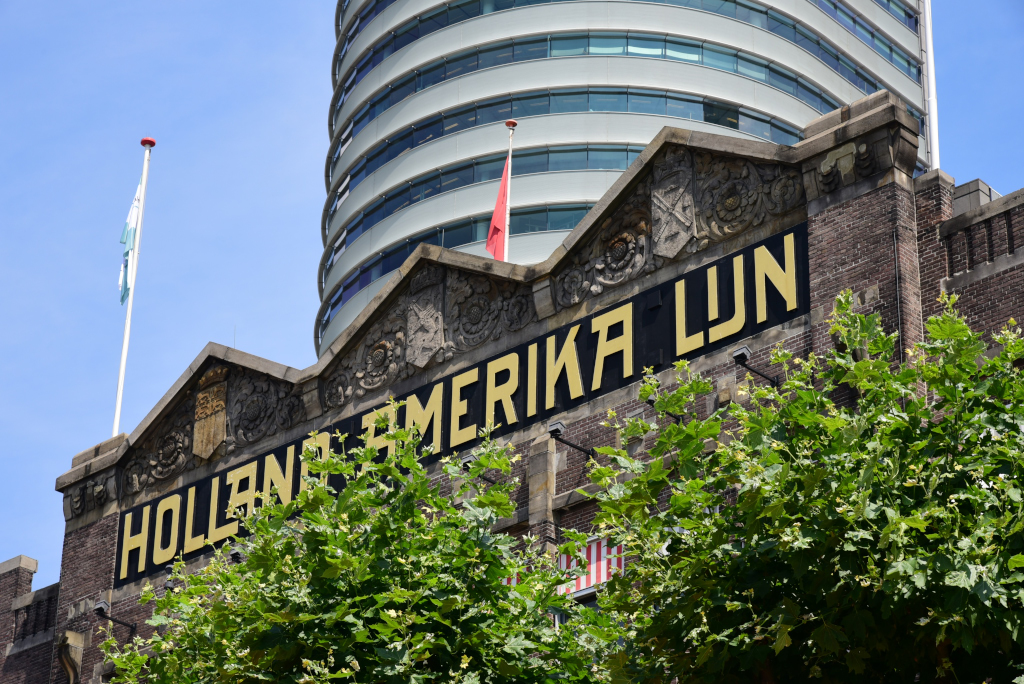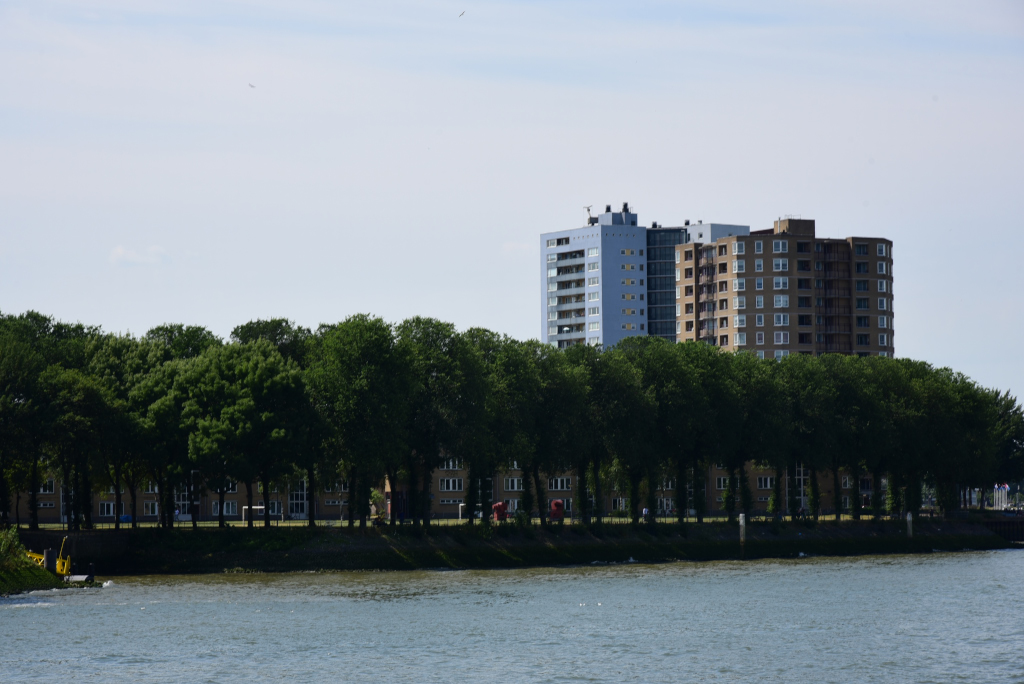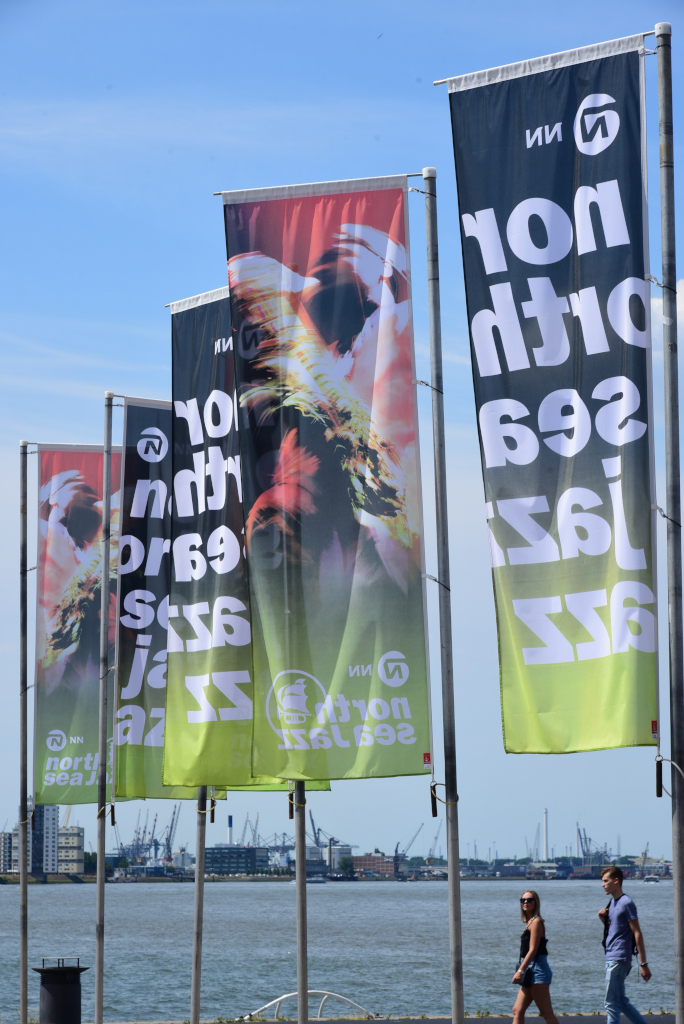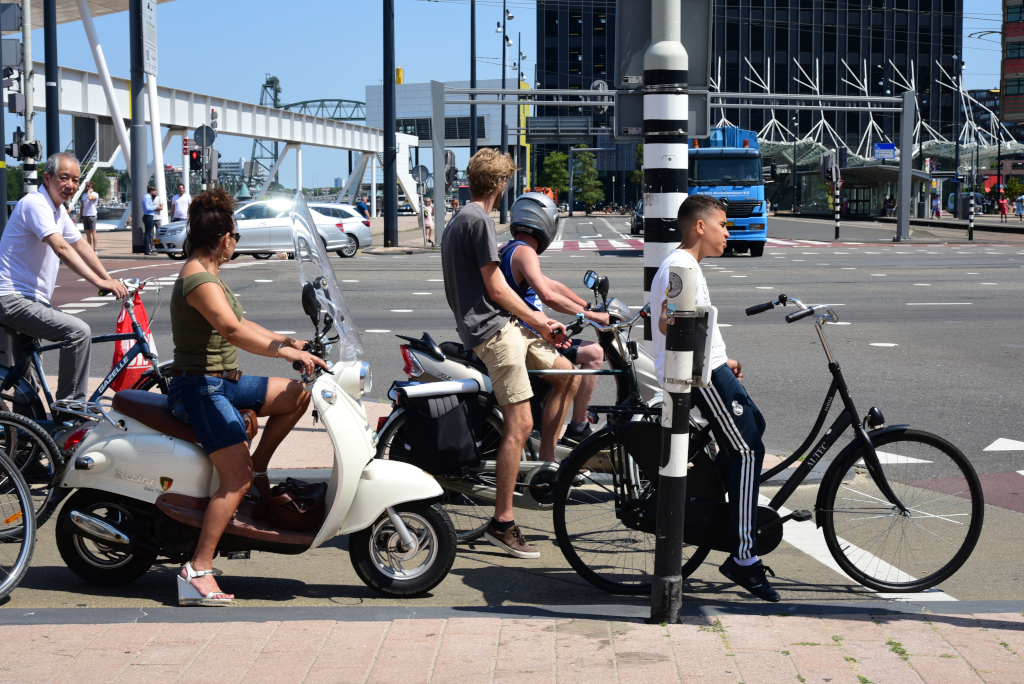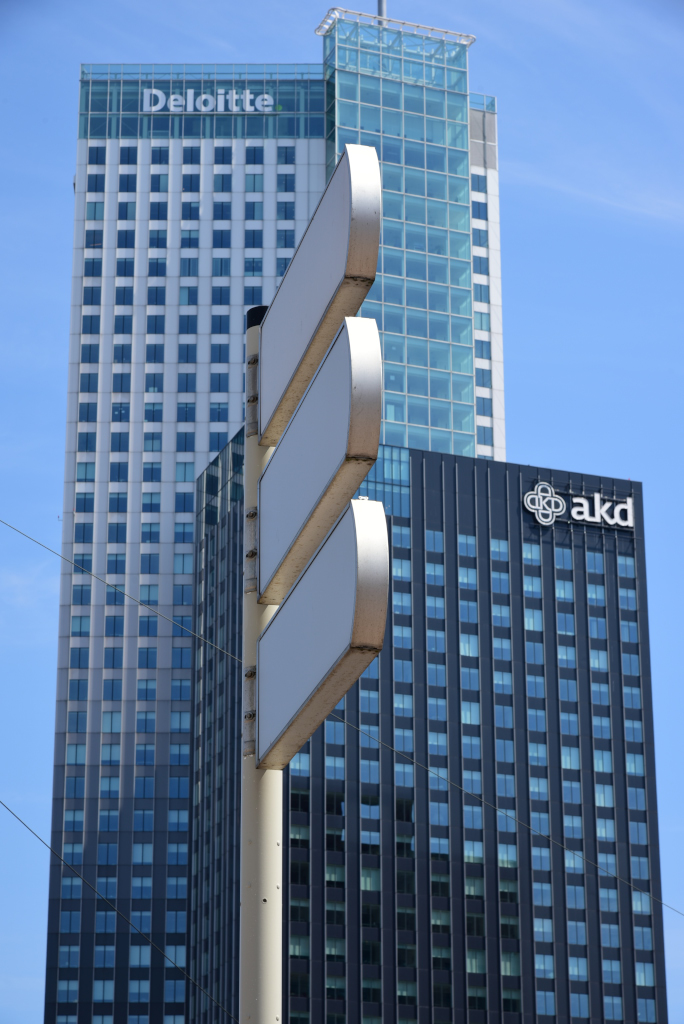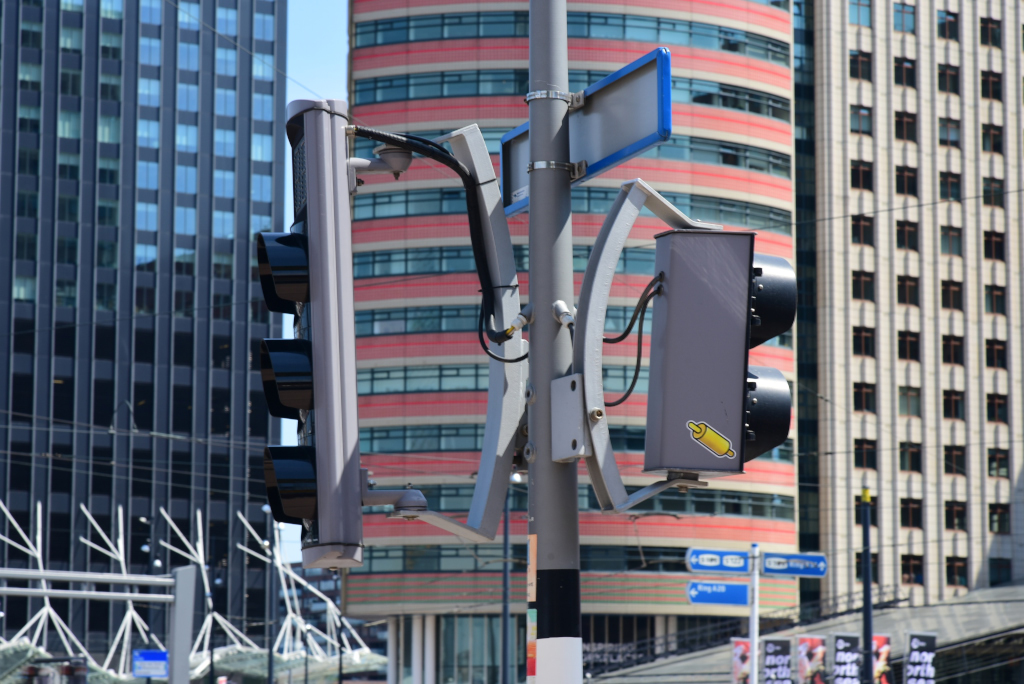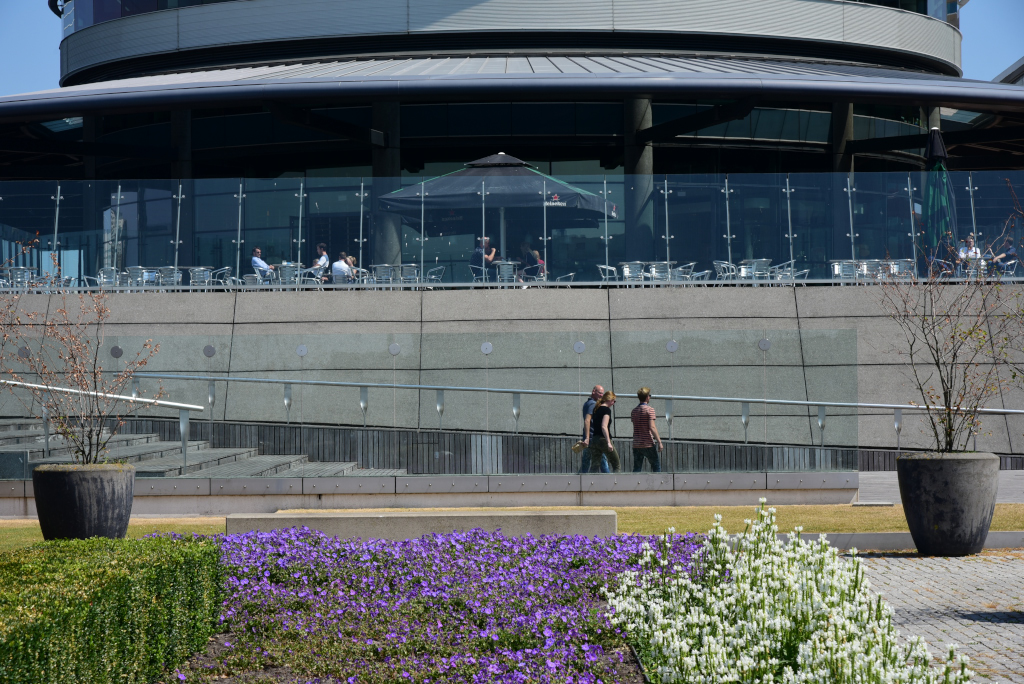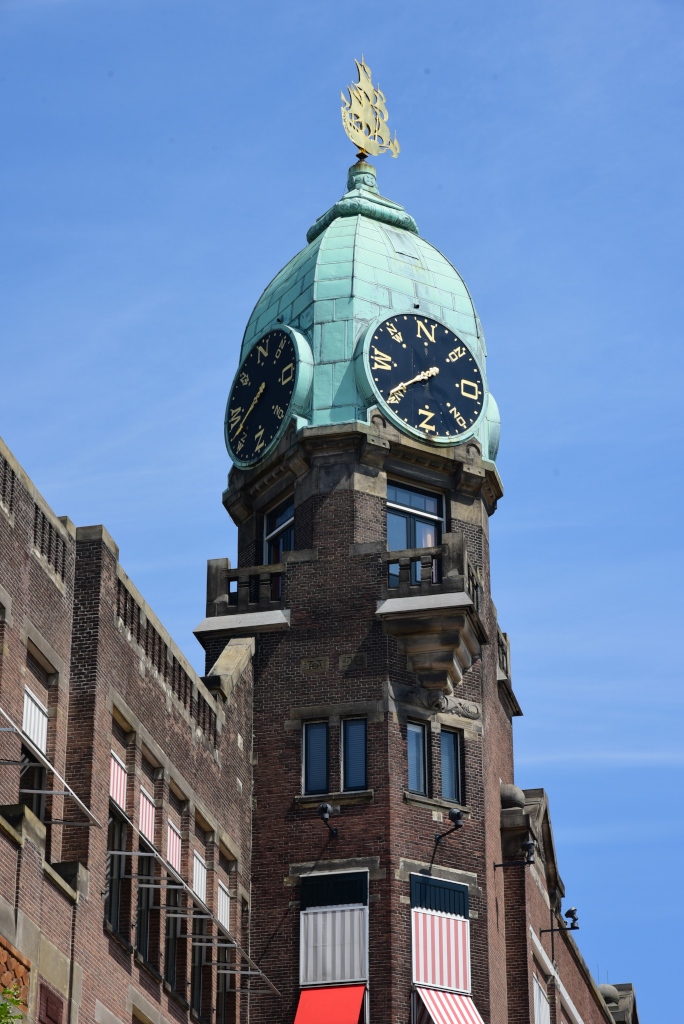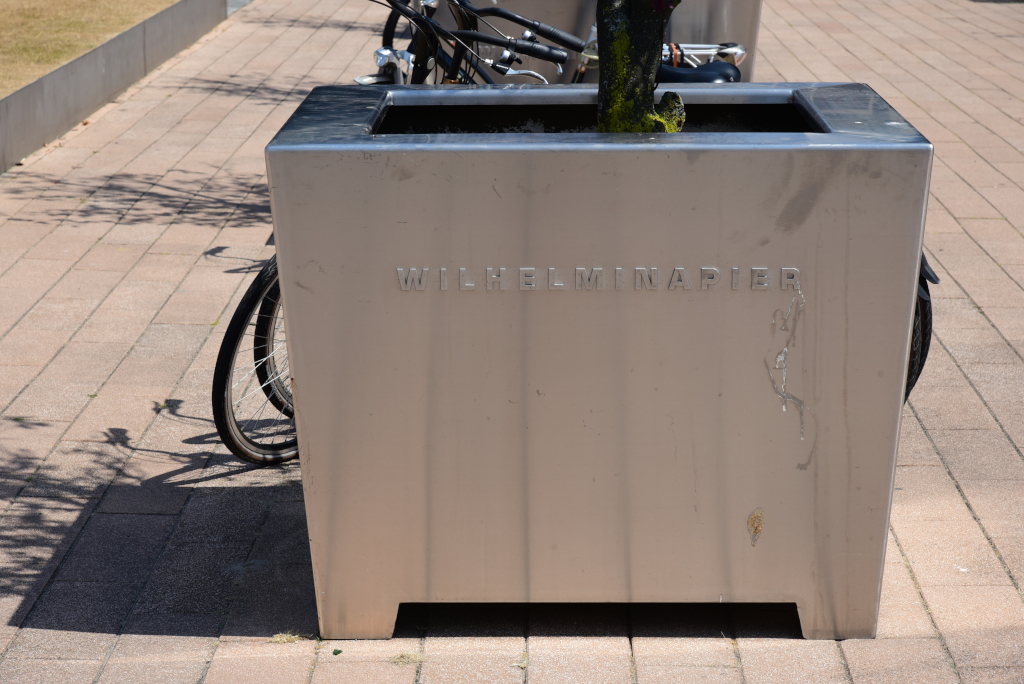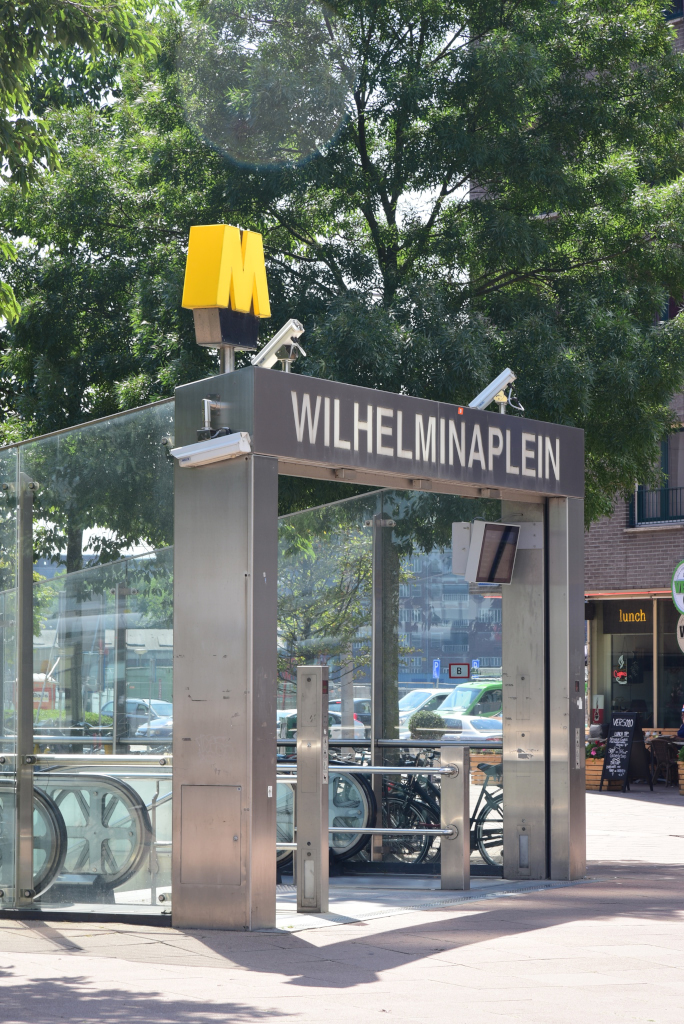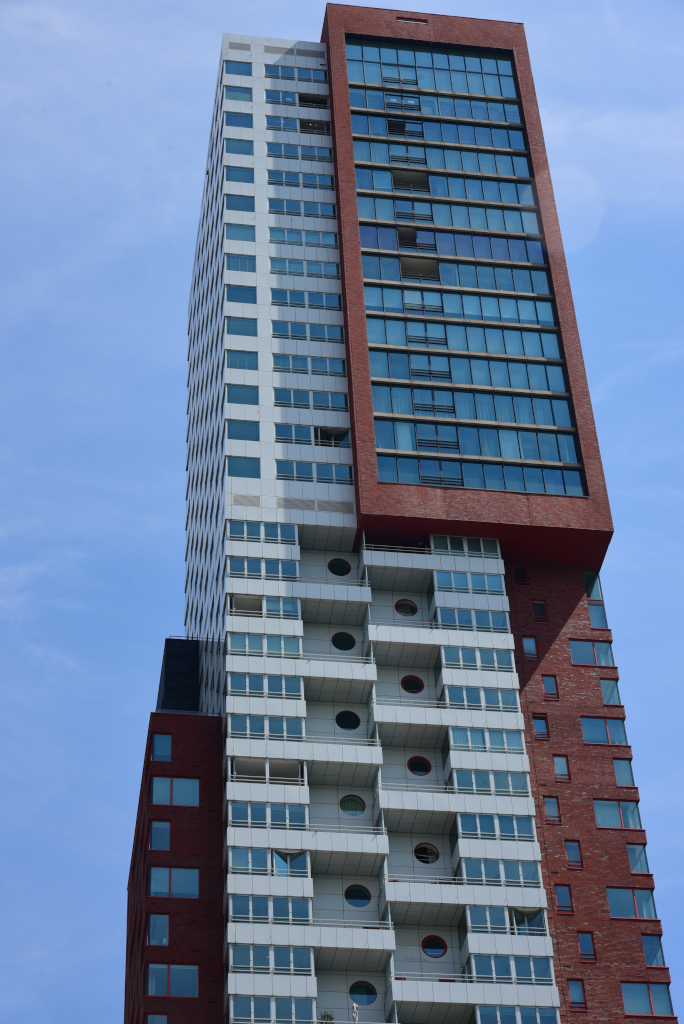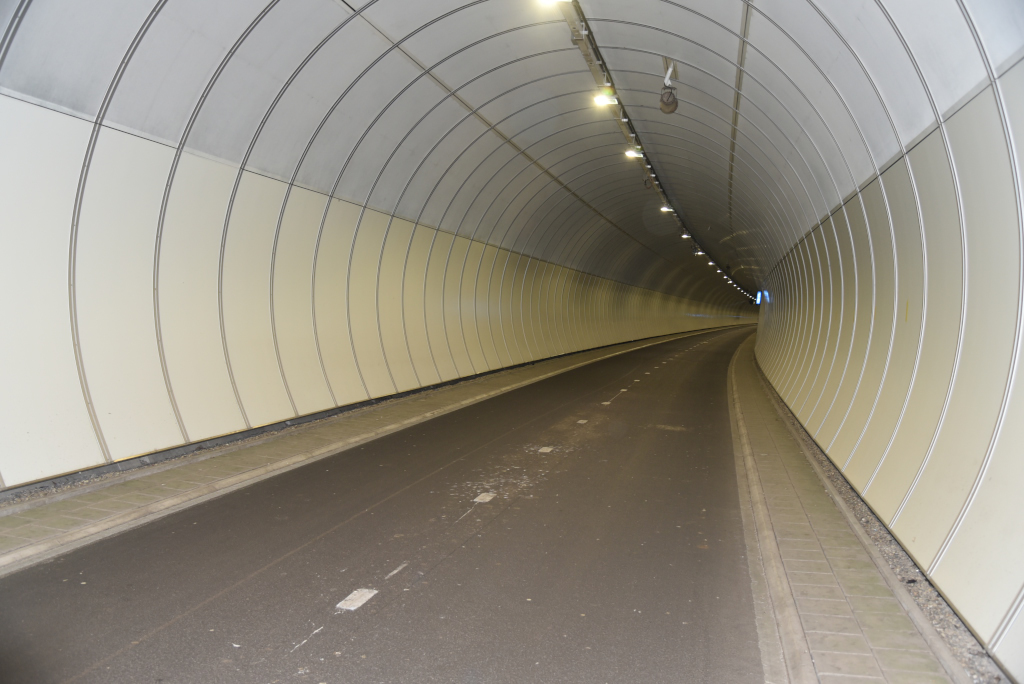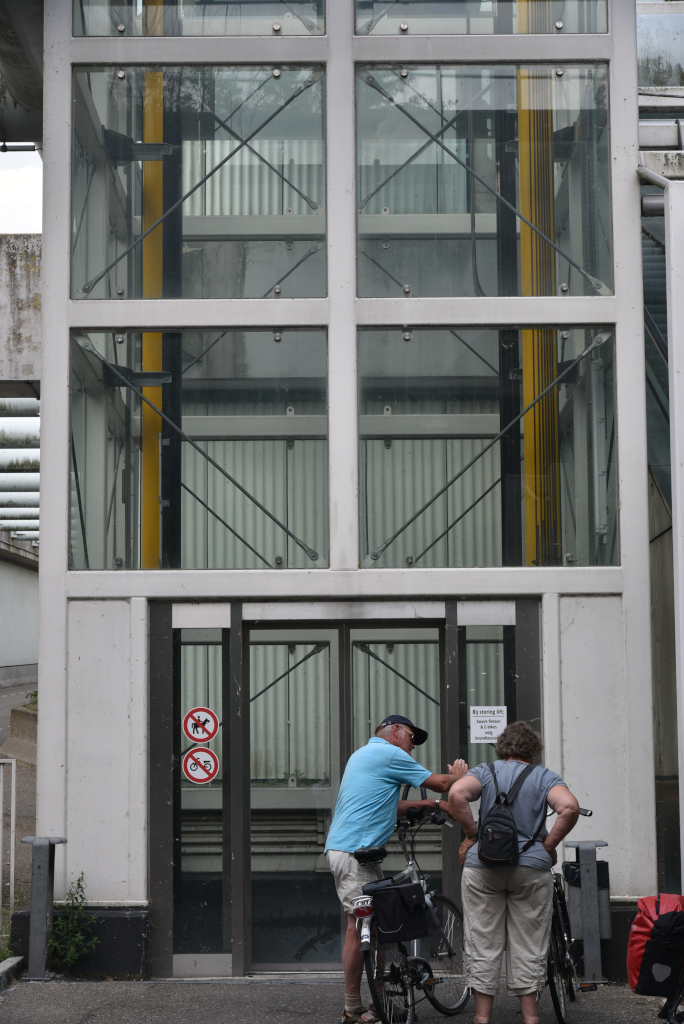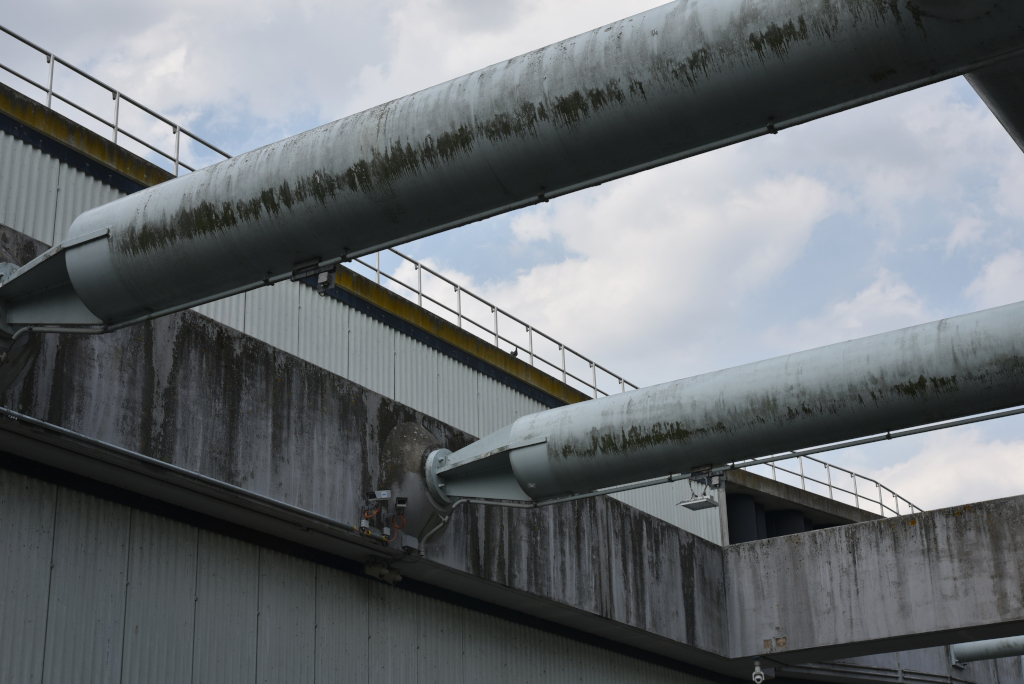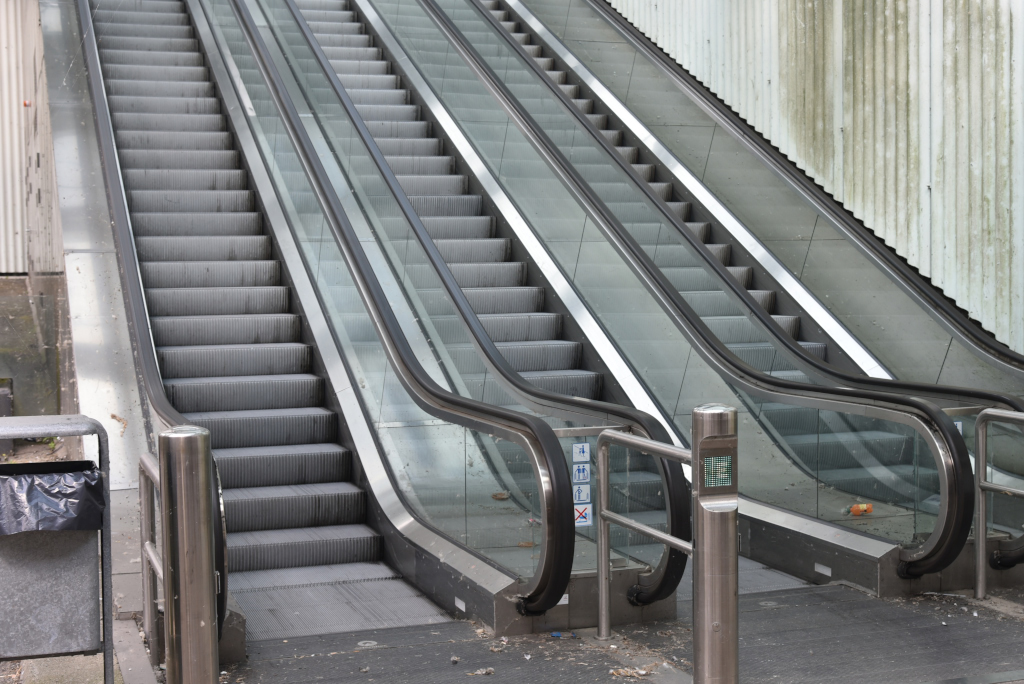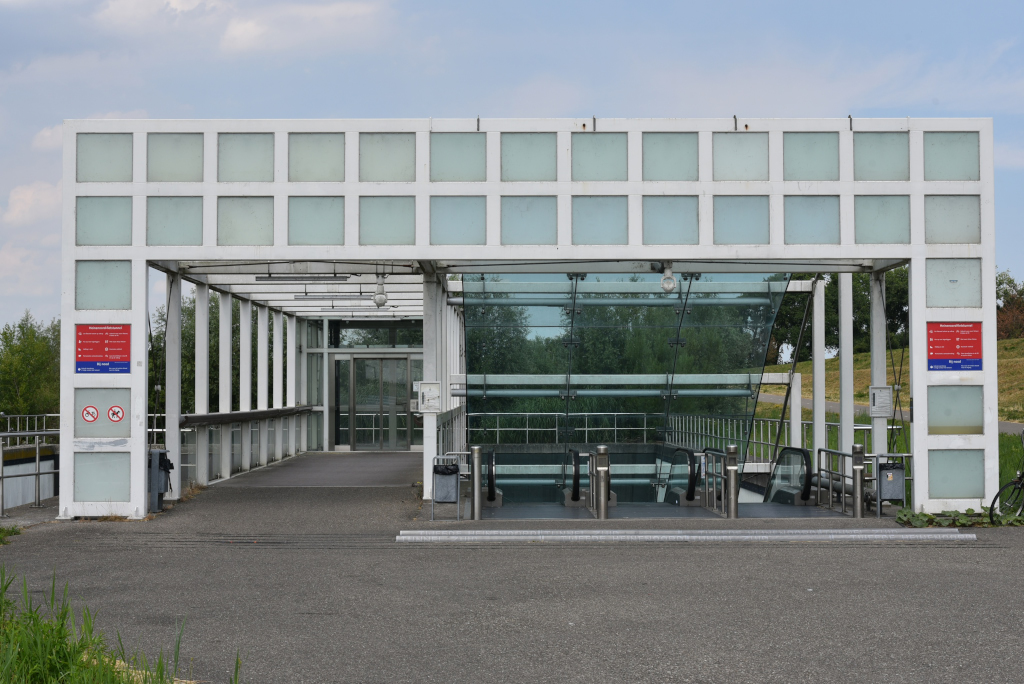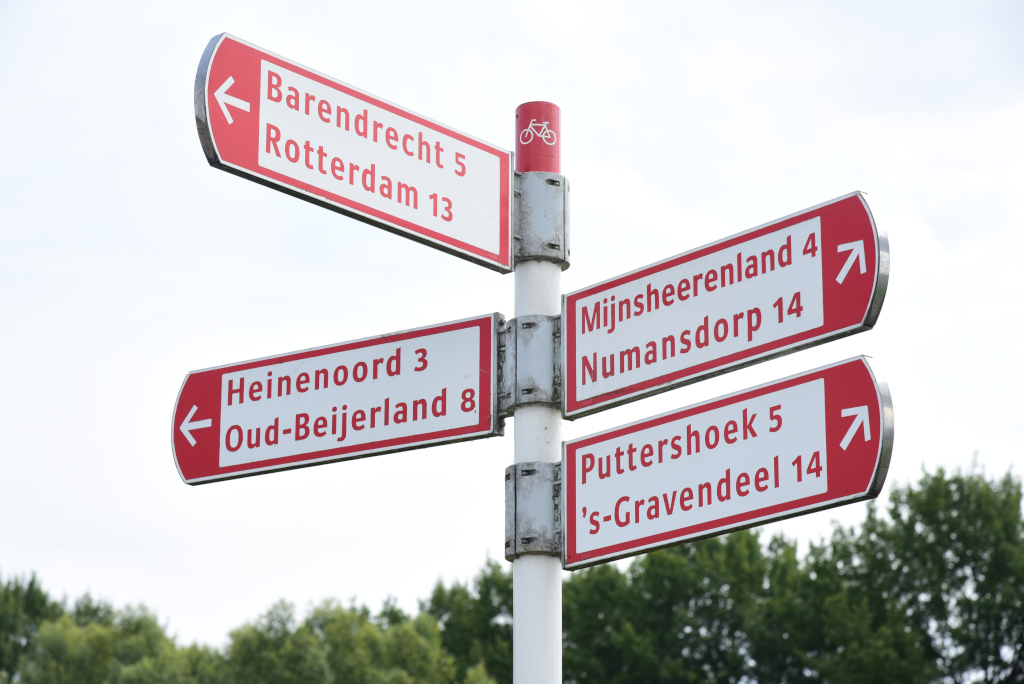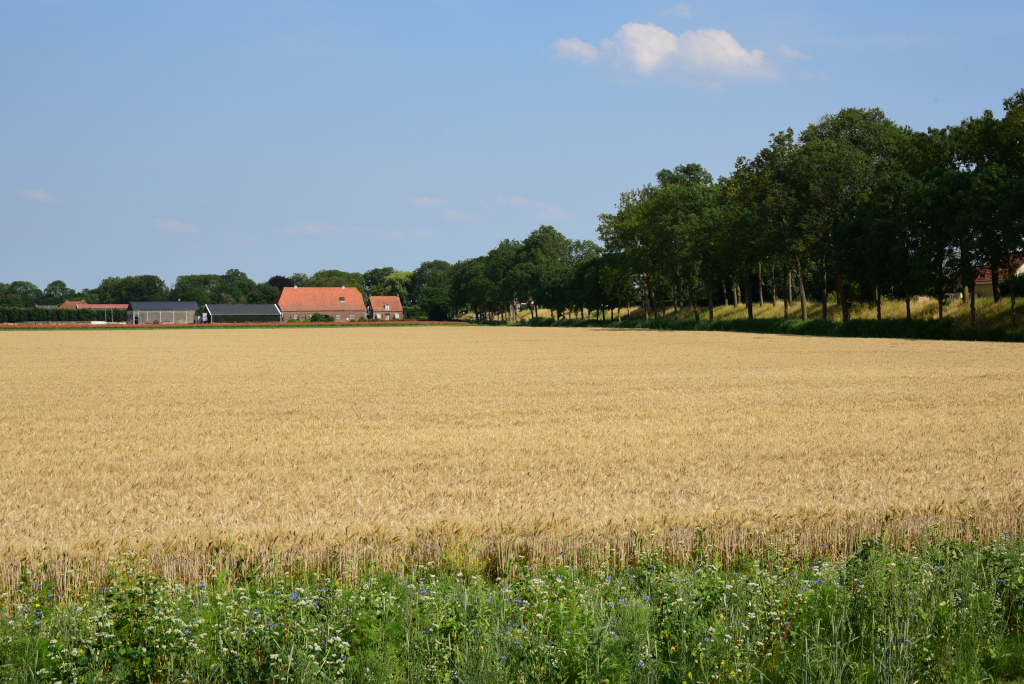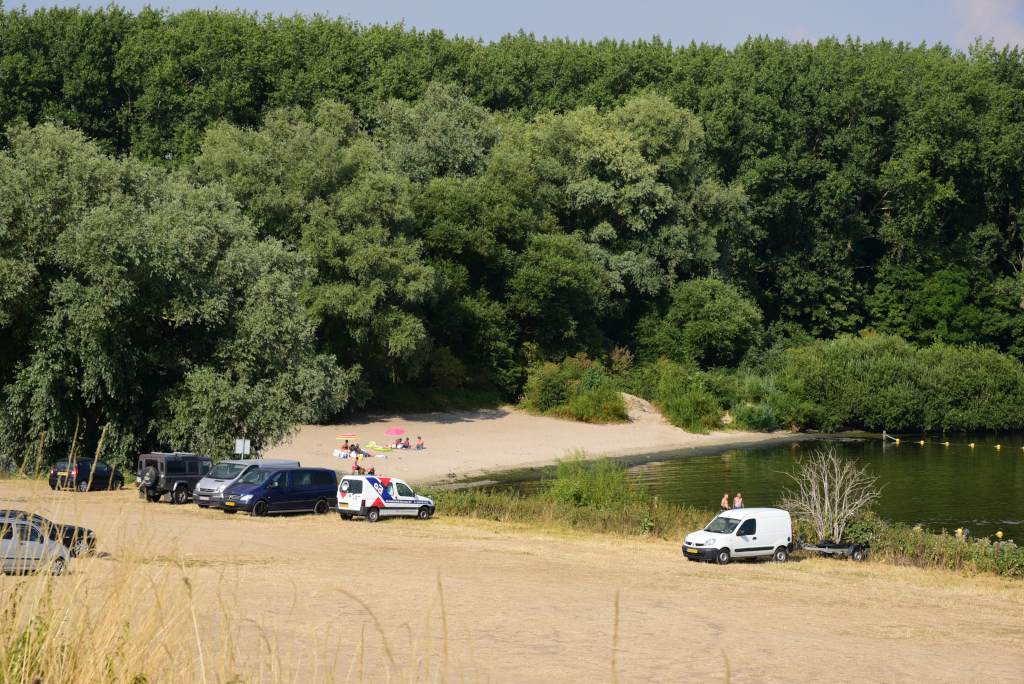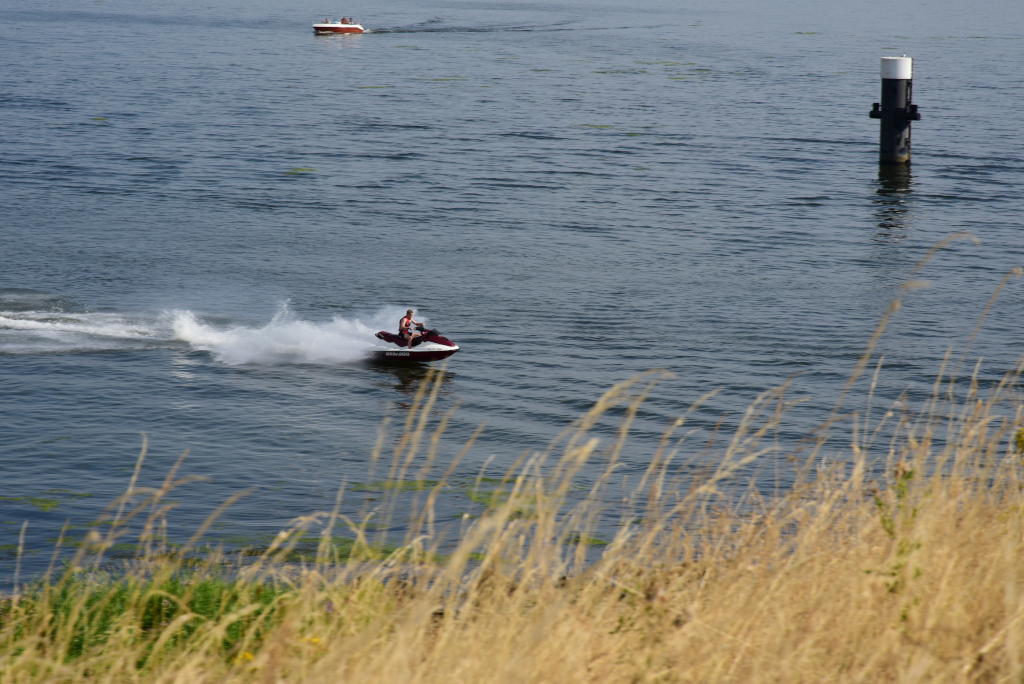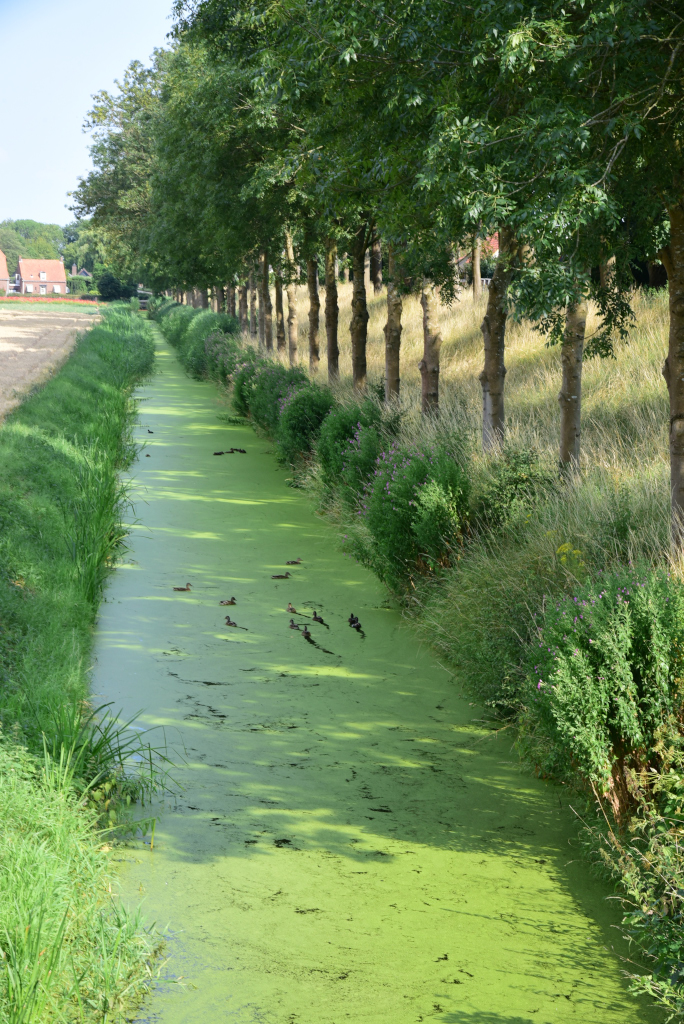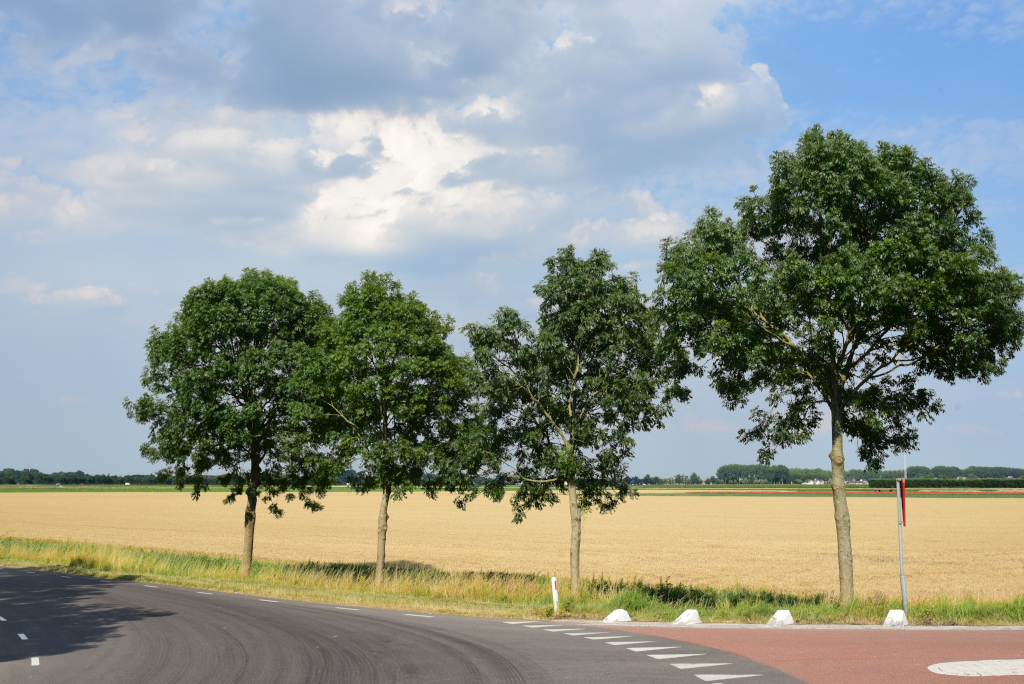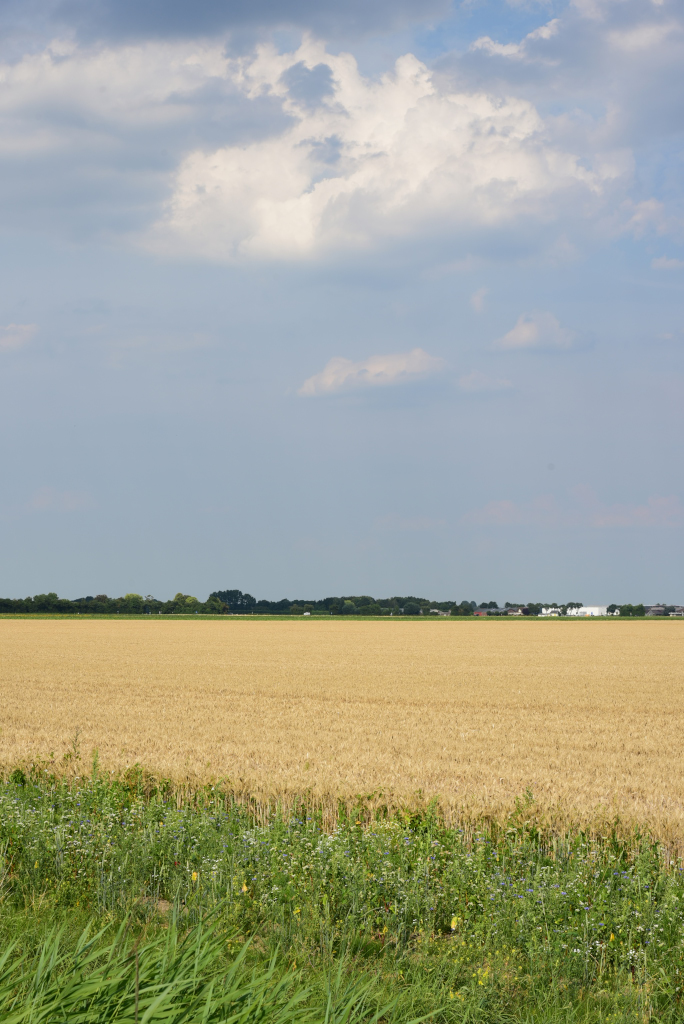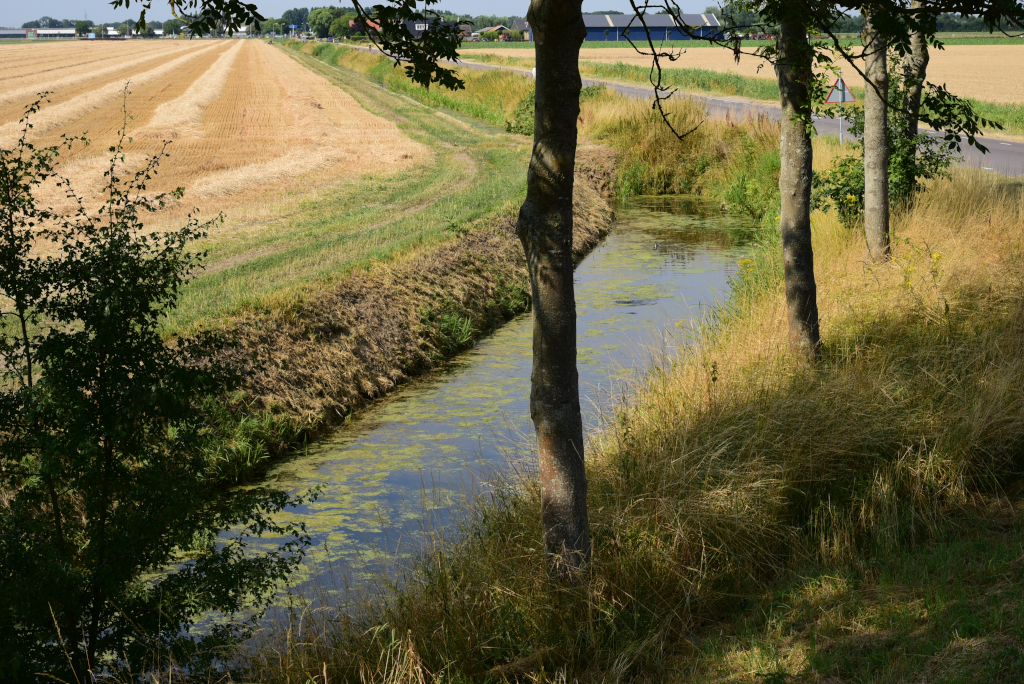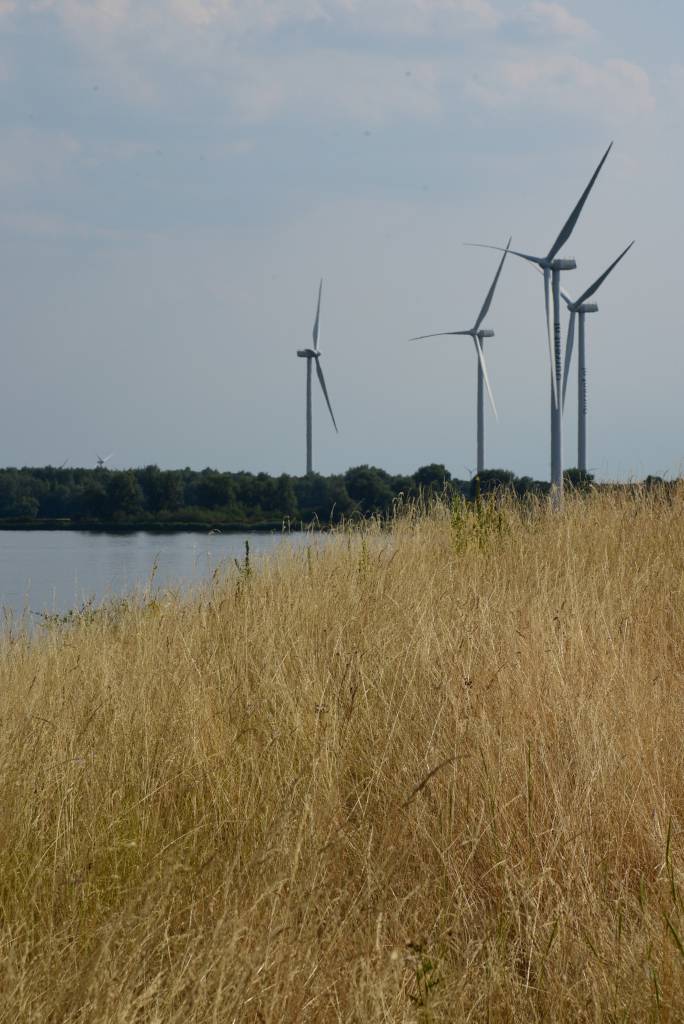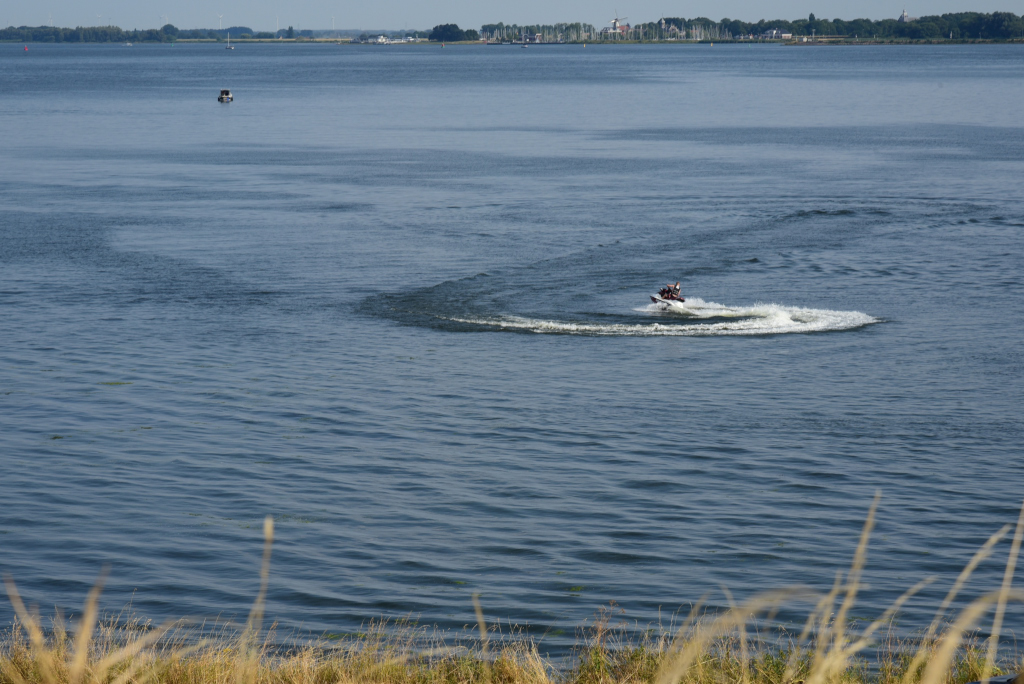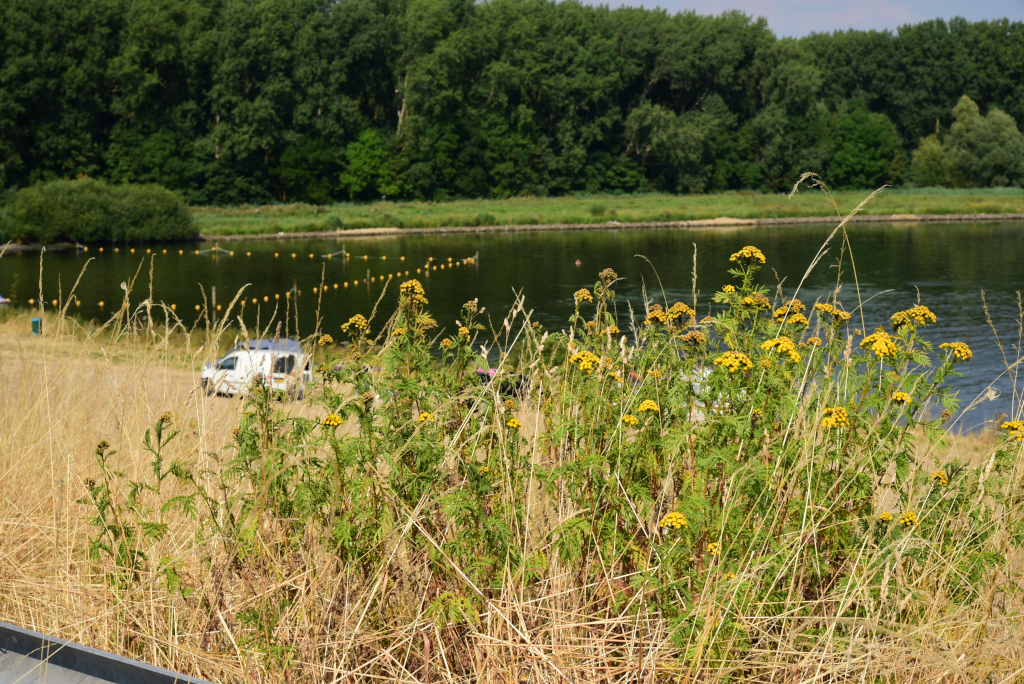July 16, 2018
Rotterdam is an endlessly fascinating city from a design perspective, even well into its expansive commercial port. Functional structures are amended with modernist artworks, while historical buildings are framed against soaring avant garde edifices.
The stunning Erasmusbrug offers the most dramatic means of crossing the Nieuwe Maas to the south of Rotterdam. Amidst the relentless commercial sprawl erected on reclaimed lands lie quaint gardens, sprawling elegant cafes and even impromptu sandy beaches. The religious accommodation of bicycle paths extends well beyond the inner city. In fact, they are ubiquitous throughout the entire country, although the routing and organization of bicycle trails can often be confusing.
The city of Rotterdam centres on the Nieuwe Maas, which mouths on the North Sea. The river originates in Picardy, France, running through Wallonia in eastern Belgium, into Limburg province of Holland before crossing the south of the Netherlands towards Rotterdam. The Oude Maas joins the Nieuwe Maas downstream from the city, and establishes a southern boundary of Rotterdam’s extraurban sprawl, which extends eastward toward Dordrecht.
Unfortunately I got lost in the city’s port, cycling westward deep into the seemingly endless sprawl of containers stacked next to canals and access roads, in the end managing to extract myself from with great difficulty. Eventually I did find my way southwards towards the expansive Zuiderpark – ironically, next to the Ahoy centre, where the North Sea Jazz festival I attended took place – then across the A15 and the Vrijenburg and Meerwerde municipalities before reaching the Oude Maas.
The Heinenoordtunnel on the Oude Maas represents a uniquely Dutch vision of sparing no expensive at implementing high quality transport infrastructure. Rather than erecting a simple bridge or pedestrian passage accompanying the vehicular bridge, a unique, two-way tunnel was built with a set of escalators and industrial elevators on either side, exclusively for the benefit of pedestrians and cyclists.
To the south of the Oude Maas lies the Hoekse Waard, a sprawling and largely characterless island comprising mostly industrial agricultural, and not much of a tourist destination, but great to get lost in the cross-hatched sprawl of bicycle trails. Notable in both Holland and Belgium is that cyclists must take bicycle trails, and can’t ride on roads. This is problematic, in that the organization and signage on bicycle trails can be quite confusing, in no way on par with that of the actual roads. Even worse, there are competing systems of bike trails, making attempting to traverse the flat landscape, bereft of obvious landmarks even more confusing.
Hollands Diep is a major waterway in western Holland, lying on the boundary between South Holland and North Brabant province, and is an estuary of the Rhine and Meuse rivers. The Hollands Diep was formed as a result of extensive flooding in the Middle Ages, becoming an important estuary of the Rhine and Meuse rivers.
The western confines of North Brabant province represent a subtly different world from that of South Holland to the north, more rural and intimate, in contrast to the starker and more urbanized commercial environment to the north.

